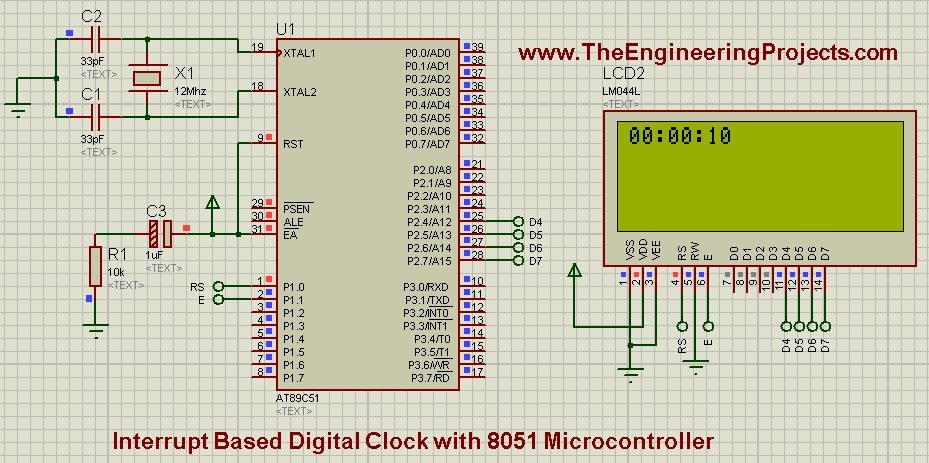


#Codevision timer software
This is free software see the source for copying conditions. Metode i2C ini terdapat 1 buah master dan 1 buah slave. Dan sekarang kita akan membahas tentang komunikasi antar mikrokontroler dengan metode I2C. Linux wlysenko-Aspire 3.13.0-37-generic #64-Ubuntu SMP Mon Sep 22 21:28: x86_64 x86_64 x86_64 GNU/Linux I/O (input output), adc, timer, pwm, bagi yang belum membaca silahkan klik disini. Sprintf(rocket_trace, "%s%s", passed_way, rocket) Ĭompile file, run and delete after (my preference) $ gcc timeout.c -o timeout &. display trace of the rocket from a start to the end a string for display all trace of the rocket and the rocket itselfĬhar *rocket_trace = (char *) malloc(100 * sizeof(char)) Fungsi pewaktu yang dimaksud disini adalah penentuan kapan program tersebut dijalankan, tidak hanya itu saja fungsi timer yang lainnya adalah PWM, ADC, dan Oscillator. will be simple return from function without throw error Pengenalan Timer & Counter Timer & Counter merupakan fitur yang telah tertanam di mikrokontroler AVR yang memiliki fungsi terhadap waktu. SetTimeout(10100) - timeout on 10 seconds and 100 milliseconds Pada tab Chip, pilih chip Atmega 12 dan clock.


May be this examples help to you #include Create New Project CodeVision AVR(Buzzer) 1/61.Buka CodeVision AVR2.Pilih File->new->project3. ATmega32A Program type : Application AVR Core Clock frequency: 1.000000 MHz.
#Codevision timer manual
Set the prescaler to the maximum value so that the counting cycles aren't too much. As mentioned in Codevision AVR User Manual Here I must use w1read(). If you're trying to sleep and do work at the same time you need threads. In codevision, you will setup the timer as an external Osc and you will add the 32K crystal on pins indicated in the datasheet page 131 on port C. It's better to sleep() most of the time then start checking the time. Hello sahabat Anak Kendali Terimakasih sudah sempat mengunjungi Web kecil saya, Artikel kali ini saya akan menulis tentang penggunaan Timer pada Mikrokontroller Atmega yang diprogram dengan CVAVR, berikut akan saya jelaskan teorinya sedikit, jika ingin lebih jelasnya silahkan bisa lihat datasheet pada IC Atmega nya. Repeatedly polling by reading the time and comparing to the done time (are we there yet?) will burn a lot of CPU cycles which may slow down other programs running on the same machine (and use more electricity/battery). You see it as pausing your program, but what they really do is release the CPU for that amount of time. Sleep(), usleep(), nanosleep() have a hidden benefit. Timers can run asynchronous to the main AVR core hence timers are totally. We learned that the simplest timer in Atmeag8 is TIMER0 with an 8-bit resolution (0-255). The two 8-bit counters can count to 255 whilst the 16- bit counter can count to 65,536. See man 2 time, man gettimeofday, man clock_gettime. This means that there are 3 sets of timers, each with the ability to count at different rates. So lets start We have a 8bit counter counting from 0-255 and the goes to 0 and so on. In this part we won’t be dealing with any code, we would just analyze the concepts. Making a timer works the same way except when you add your time to wait you need to remember to manually do the carry (into the time_t) if the resulting microseconds or nanoseconds value goes over 1 second. We will use the simplest timer, TIMER0 for PWM generation.(Note TIMER0 of ATmega8 cannot be used for PWM generation, these are valid for ATmega16 and ATmega32). For times less than 1 second you need to use gettimeofday() (microseconds) or clock_gettime() (nanoseconds) and deal with a struct timeval or struct timespec which is a time_t and the microseconds or nanoseconds since that 1 second mark. 17 17 CodeVision Wizard include // LEDs are on PORTB unsigned char ledStatus 0xFE // Timer 1 overflow interrupt service routine interrupt TIM1OVF void. That will probably include resetting it by doing another fire_t = time(NULL) + seconds_to_wait for next time.Ī time_t is a somewhat antiquated unix method of storing time as the number of seconds since midnight but it has many advantages. If (my_t > fire_t) then consider the timer fired and do the stuff you want there. Inside your loop do another my_t = time(NULL) A time_t is essentially a uint32_t, you may need to cast it. Then (for times over 1 second), initialize your timer by reading the current time: my_t = time(NULL) Īdd the number of seconds your timer should wait and store it in fire_t. If you already have a main loop (most GUI event-driven stuff does) you can probably stick your timer into that.


 0 kommentar(er)
0 kommentar(er)
